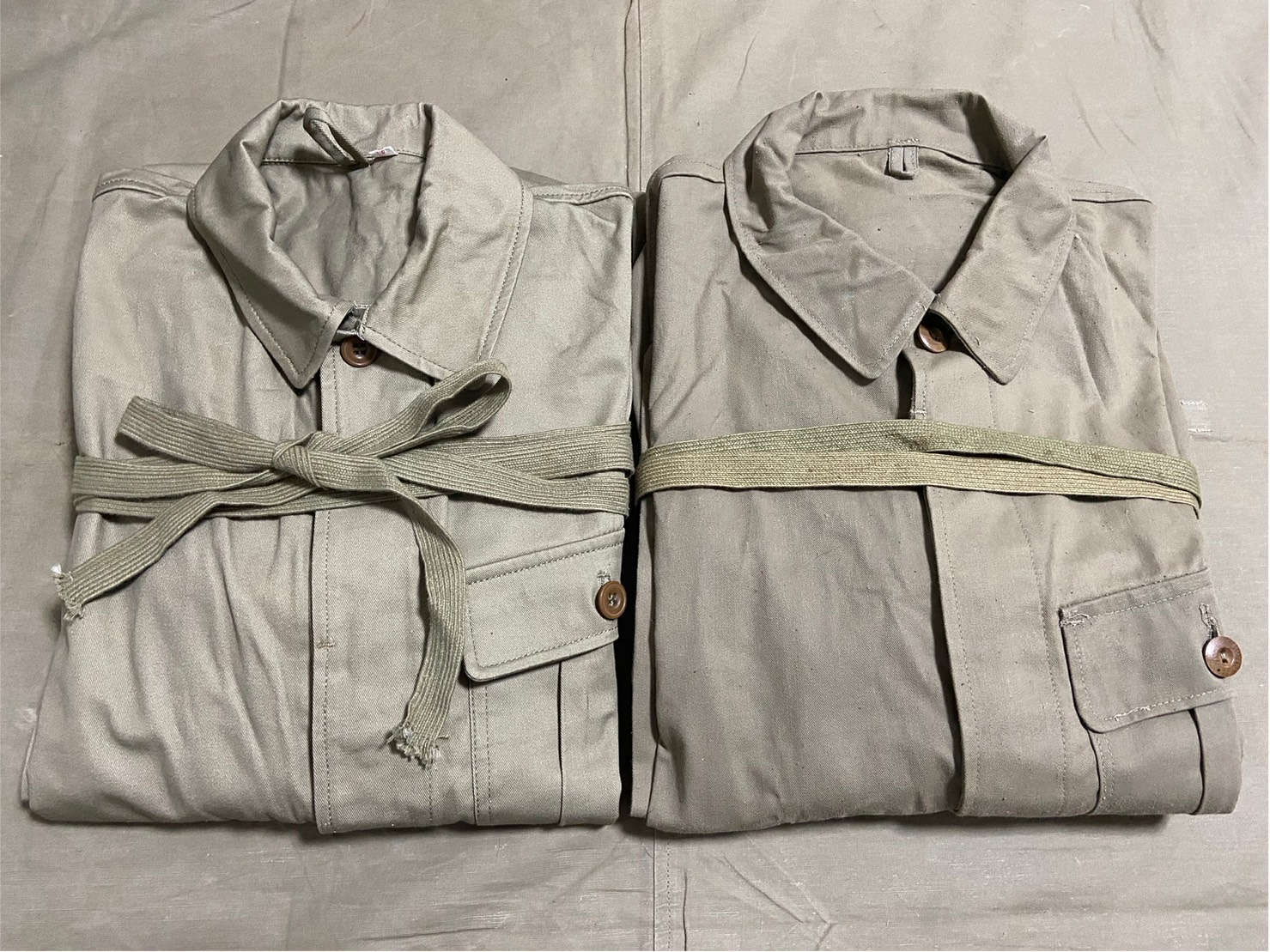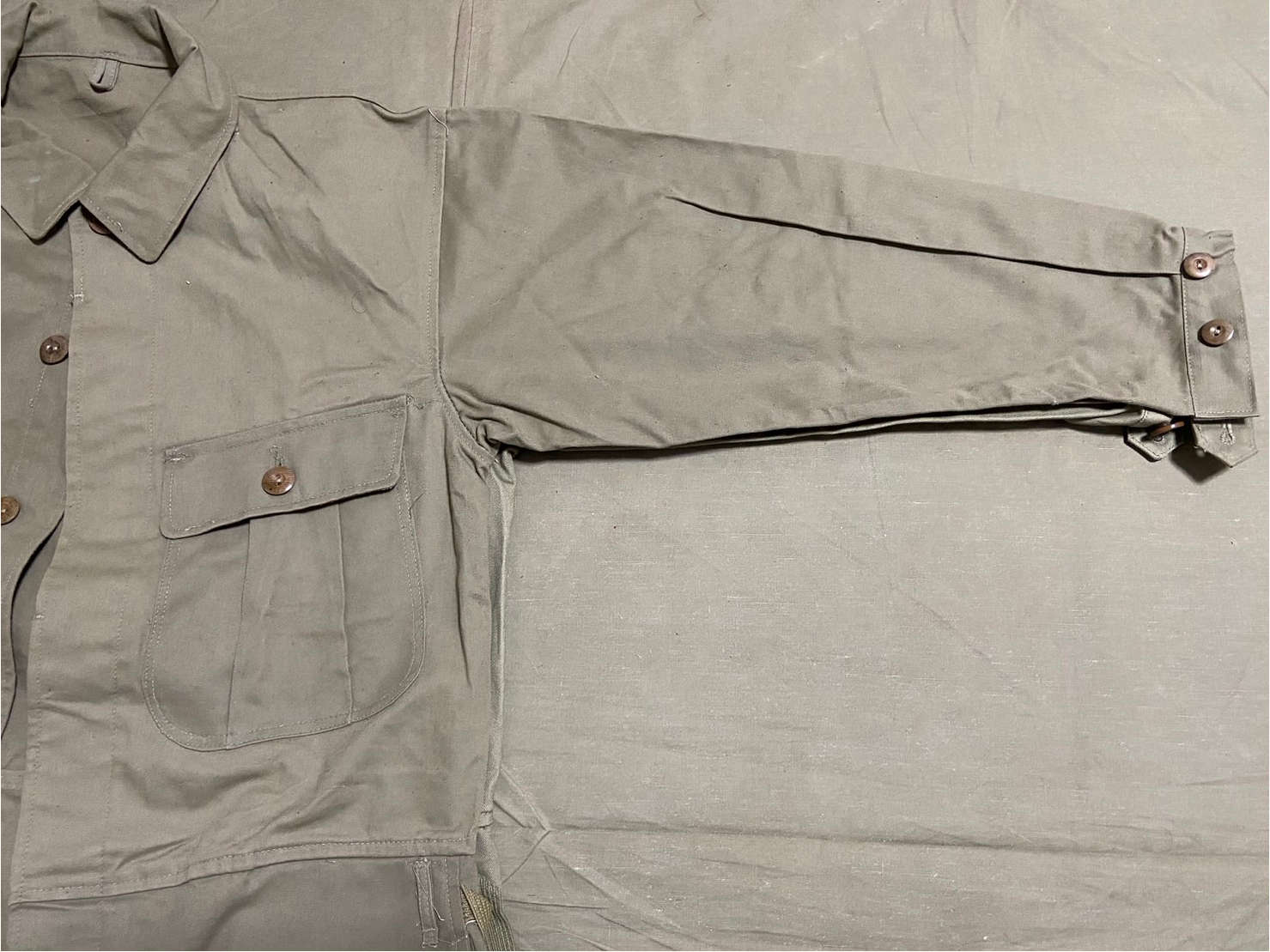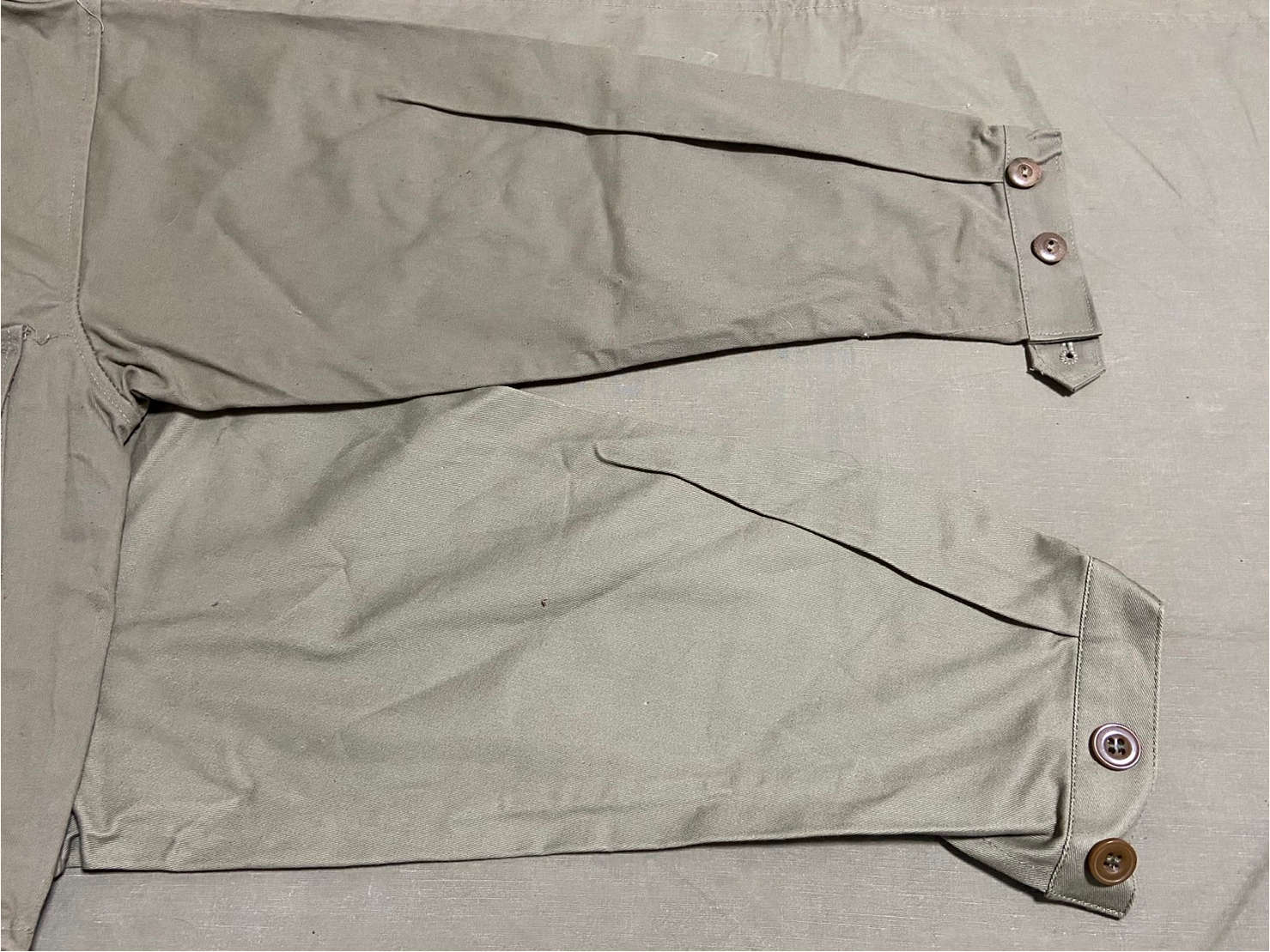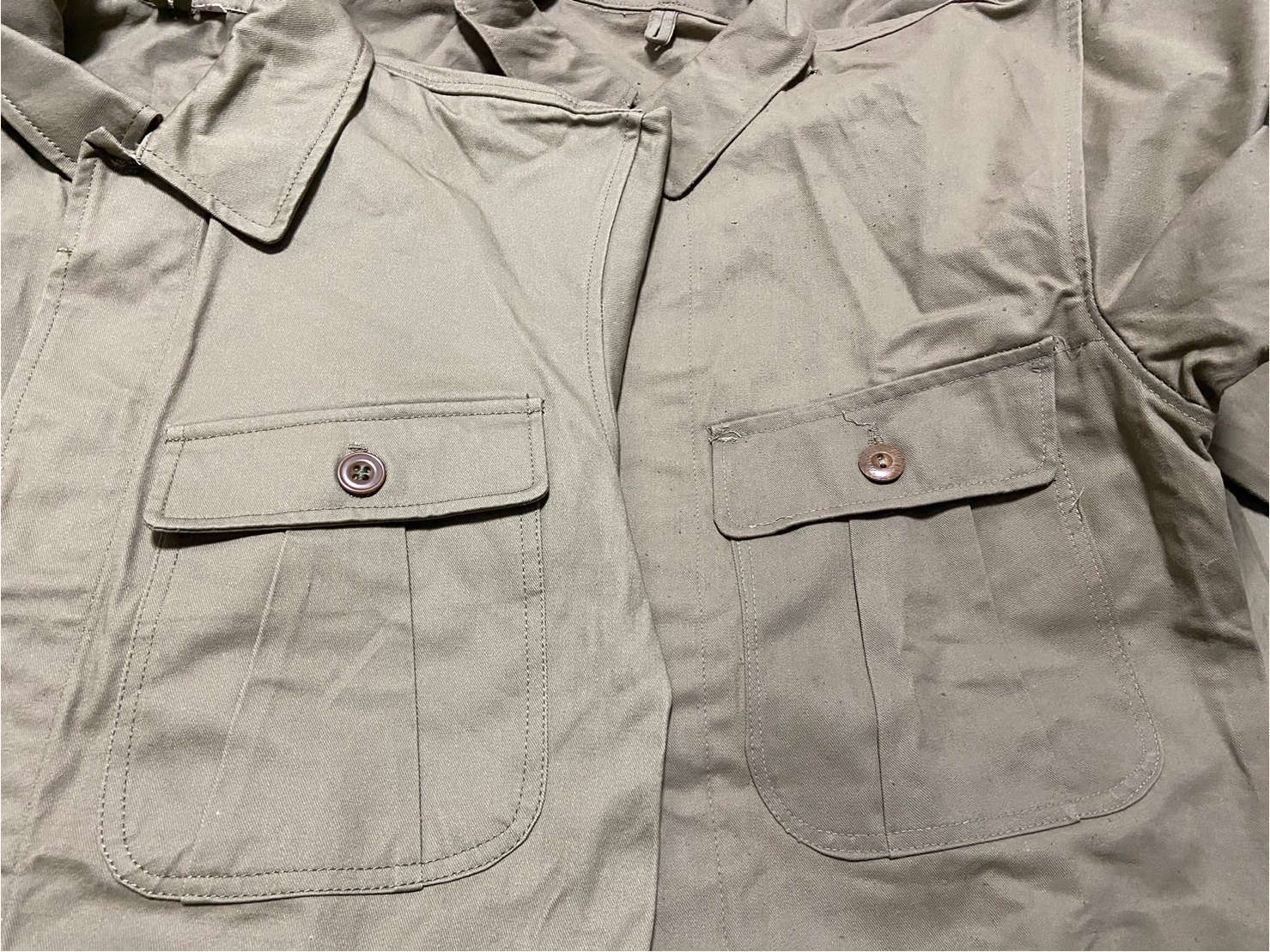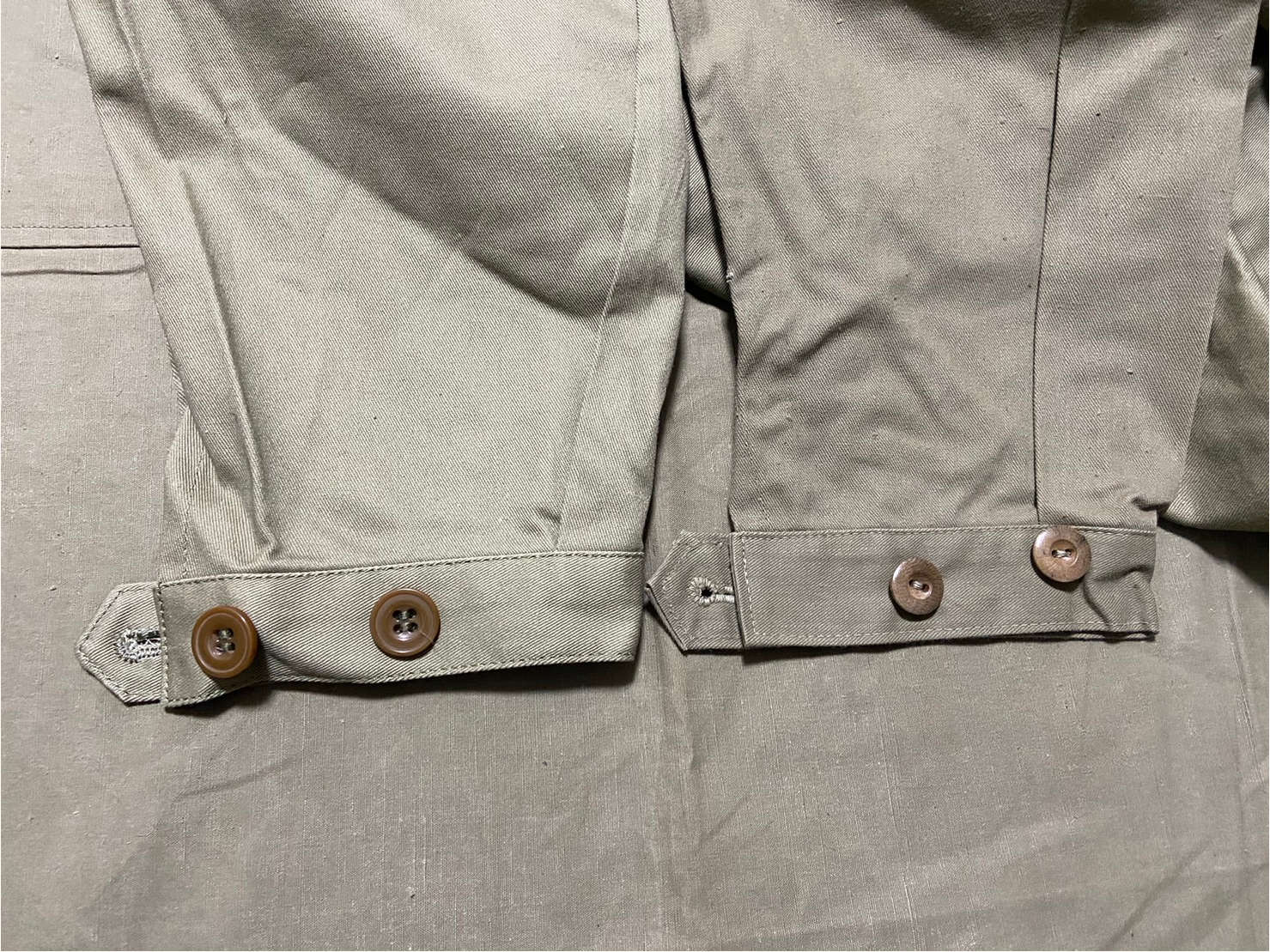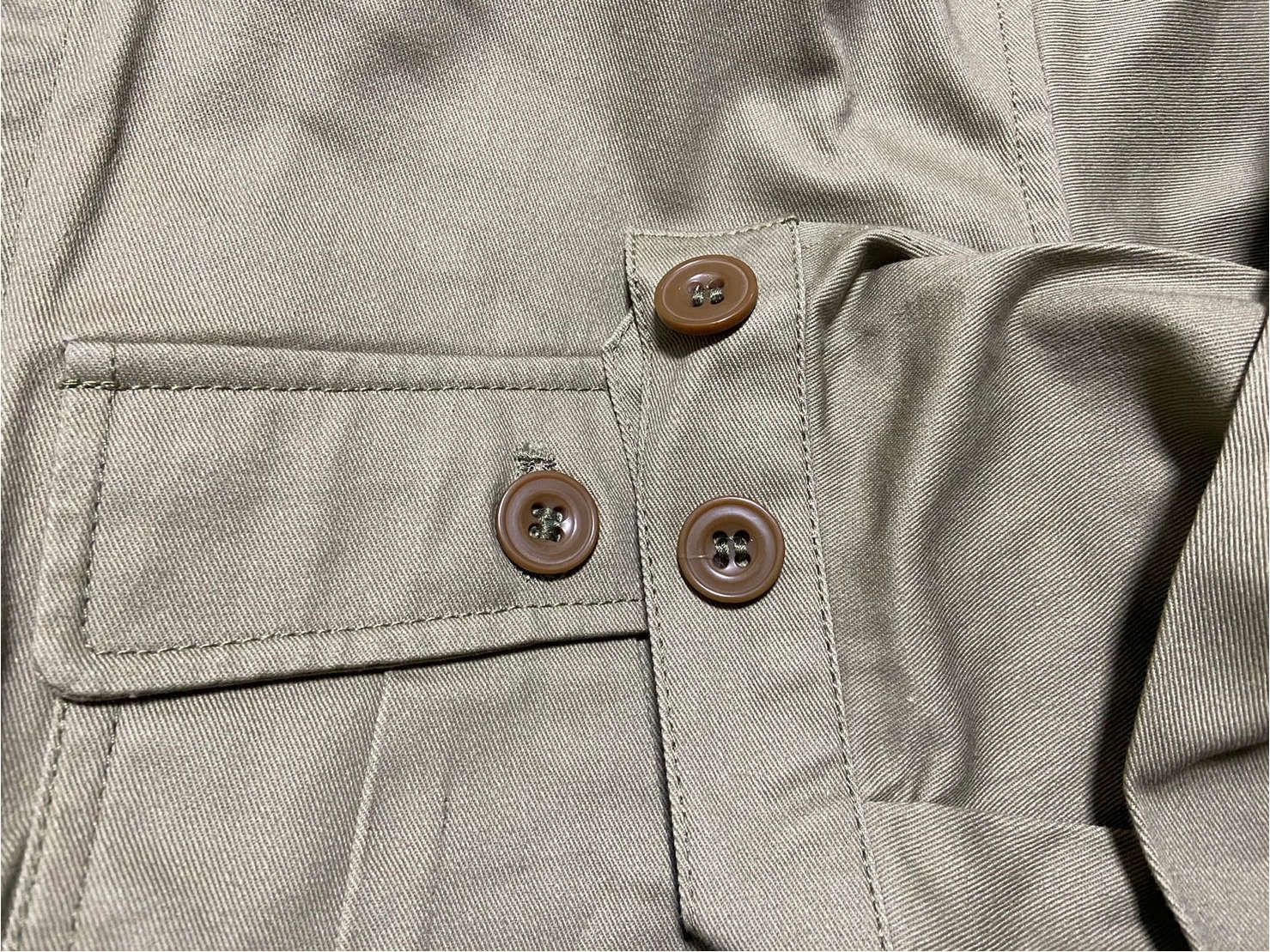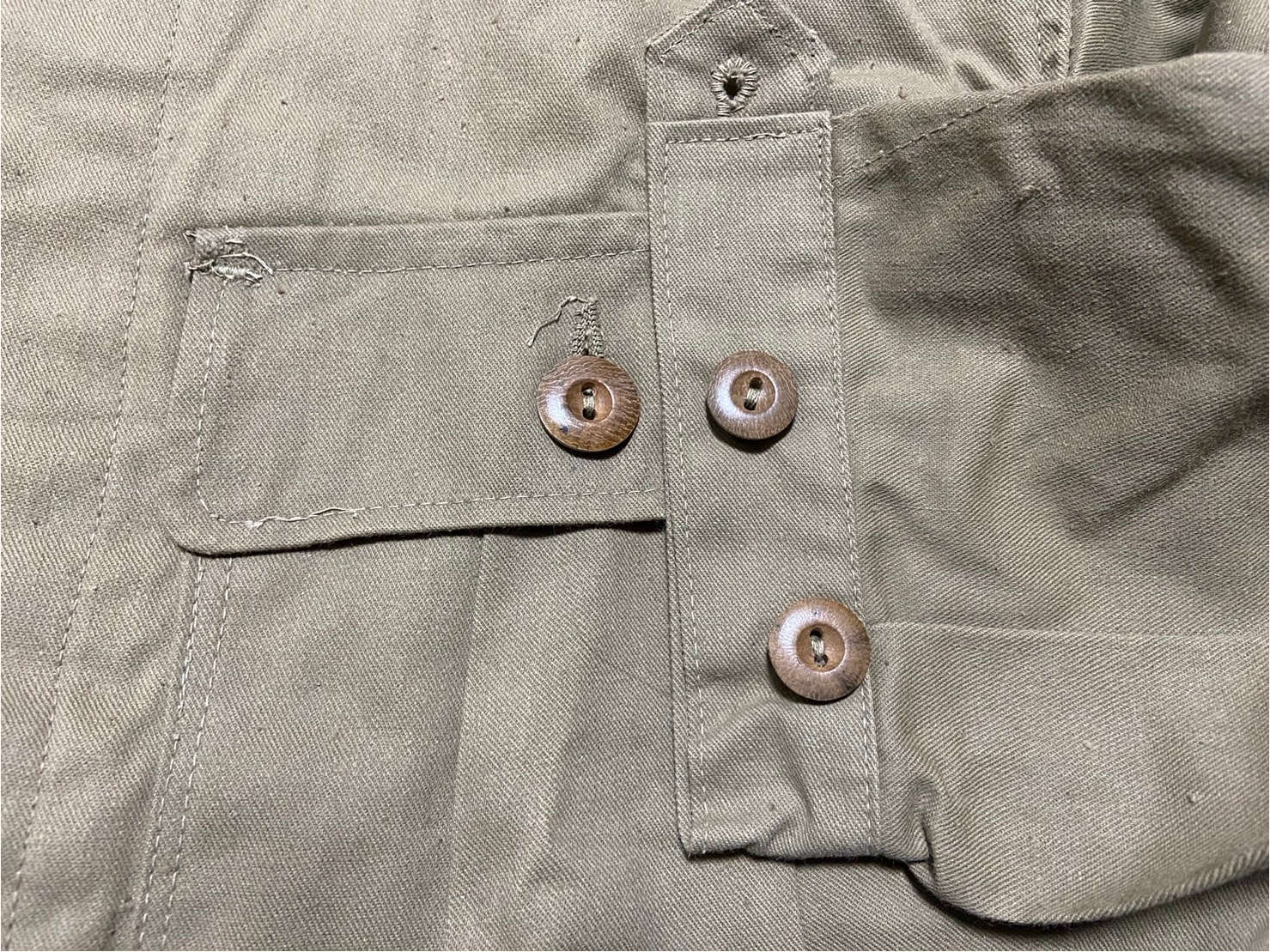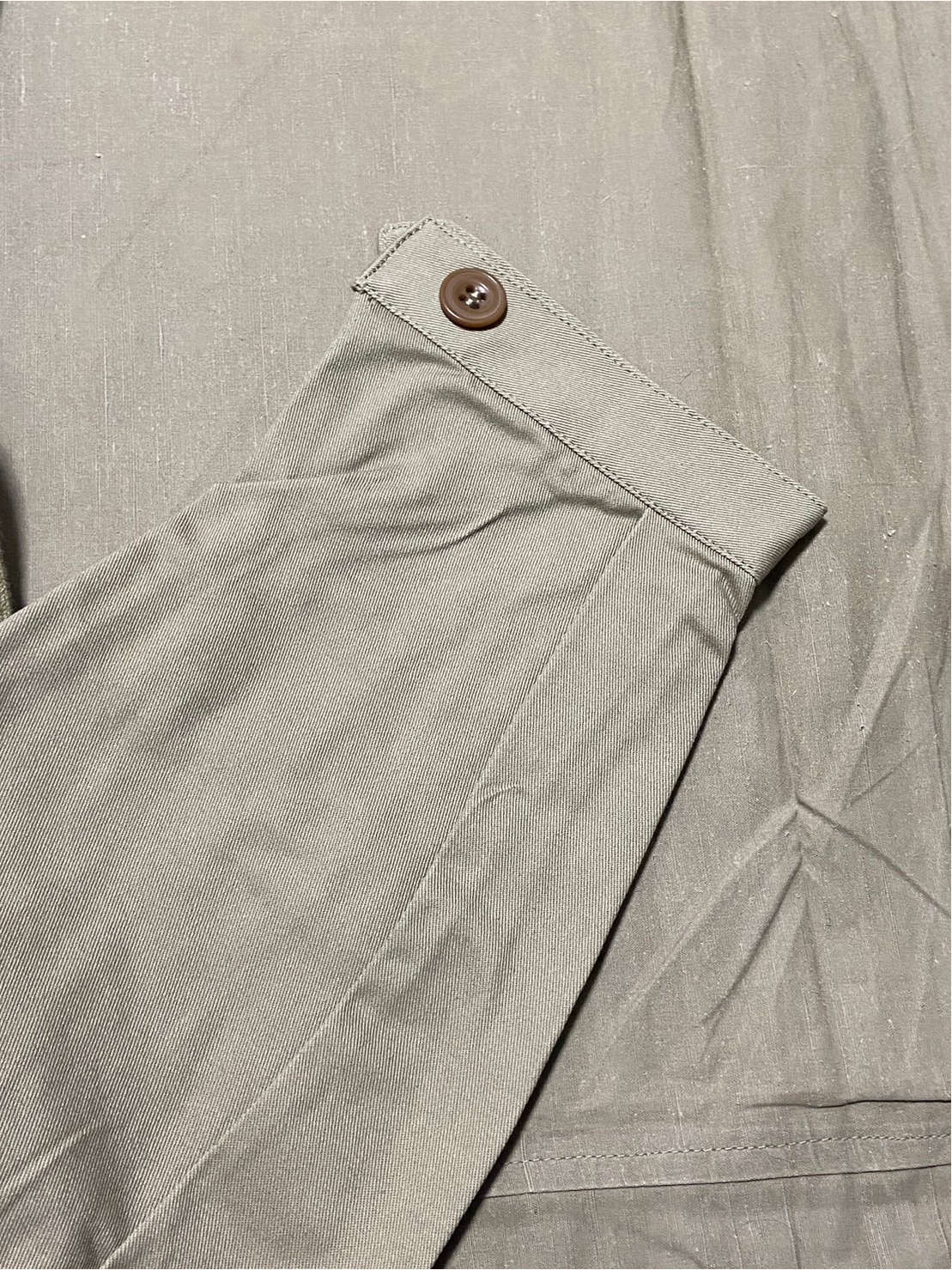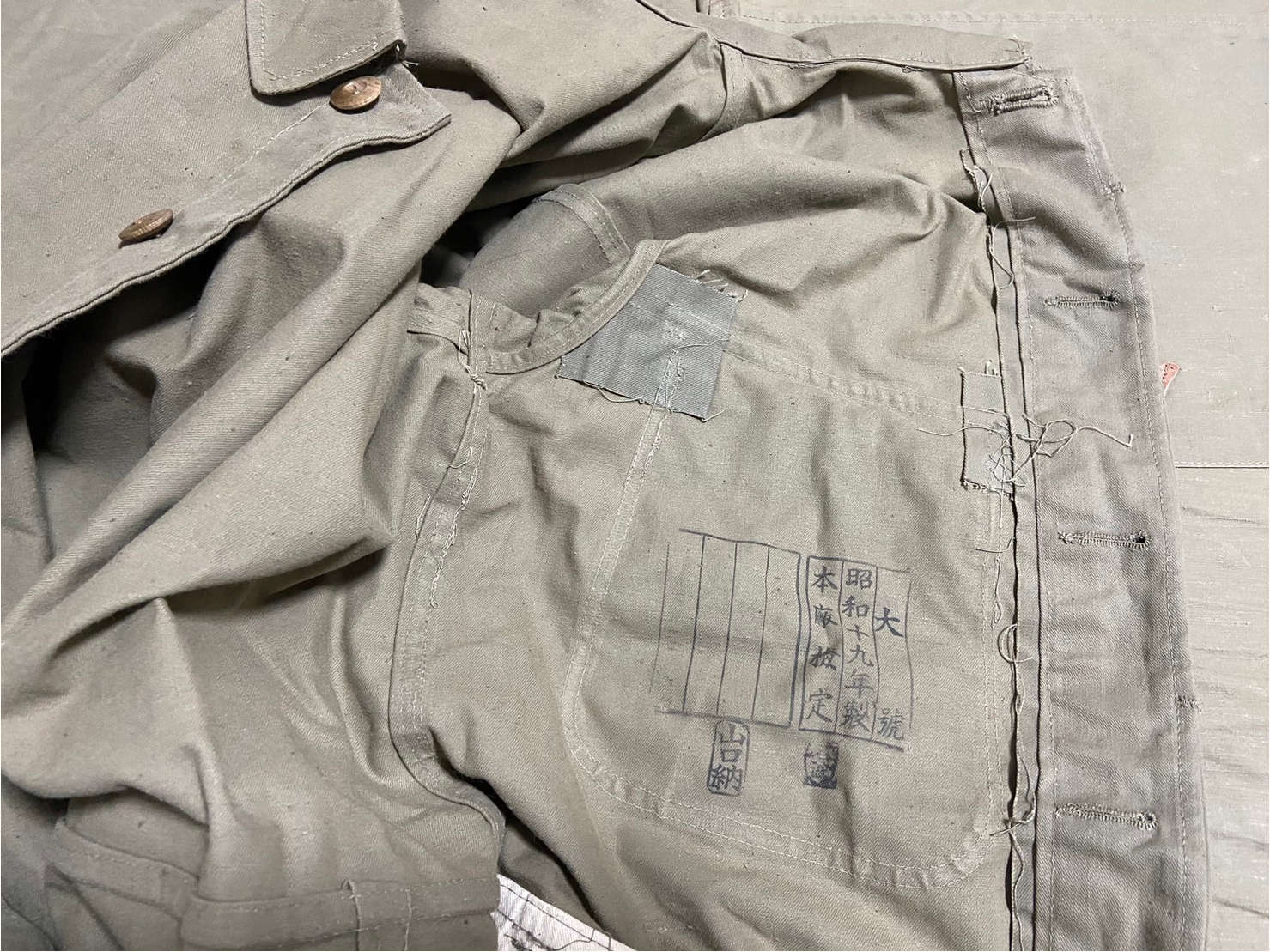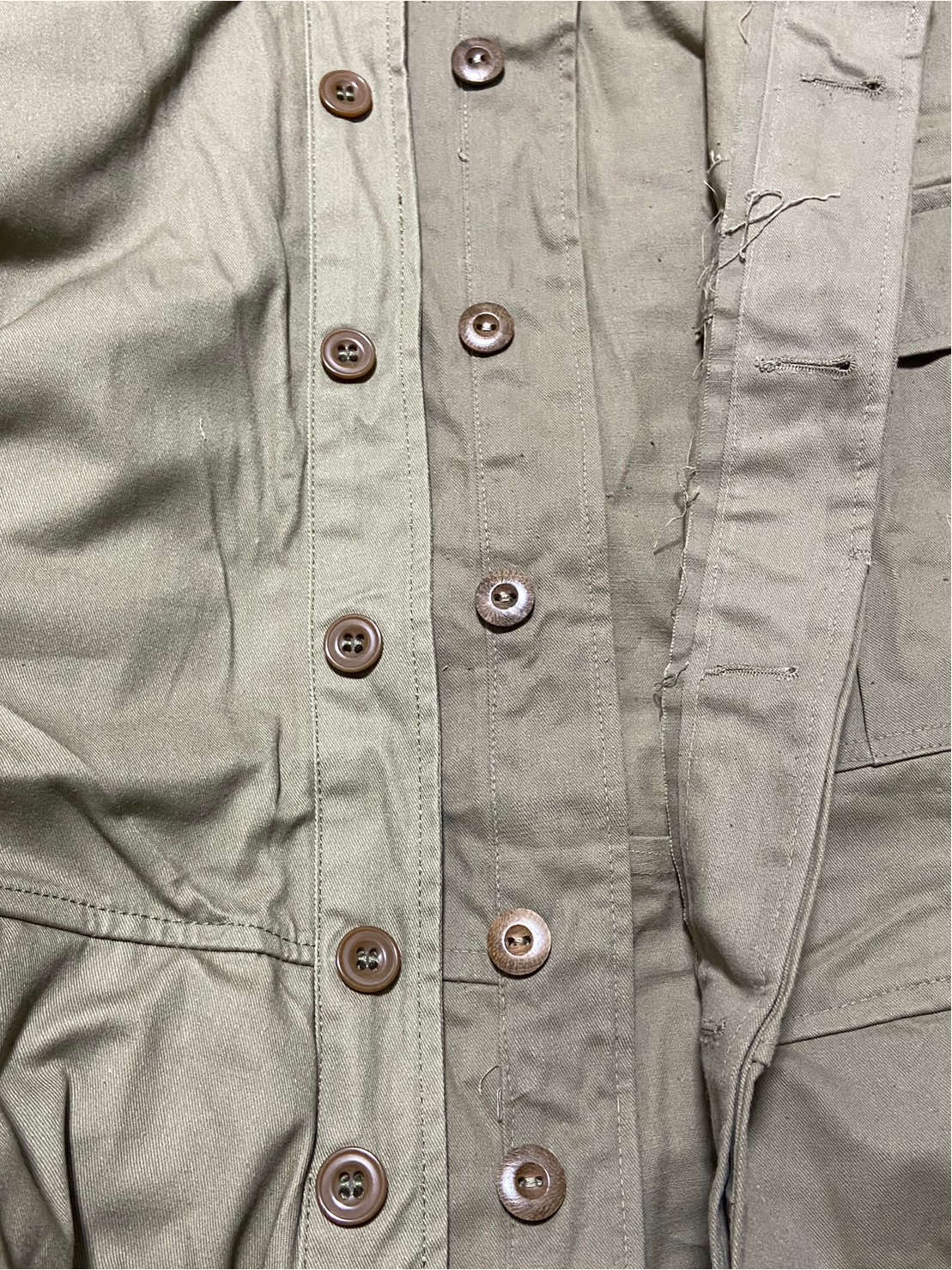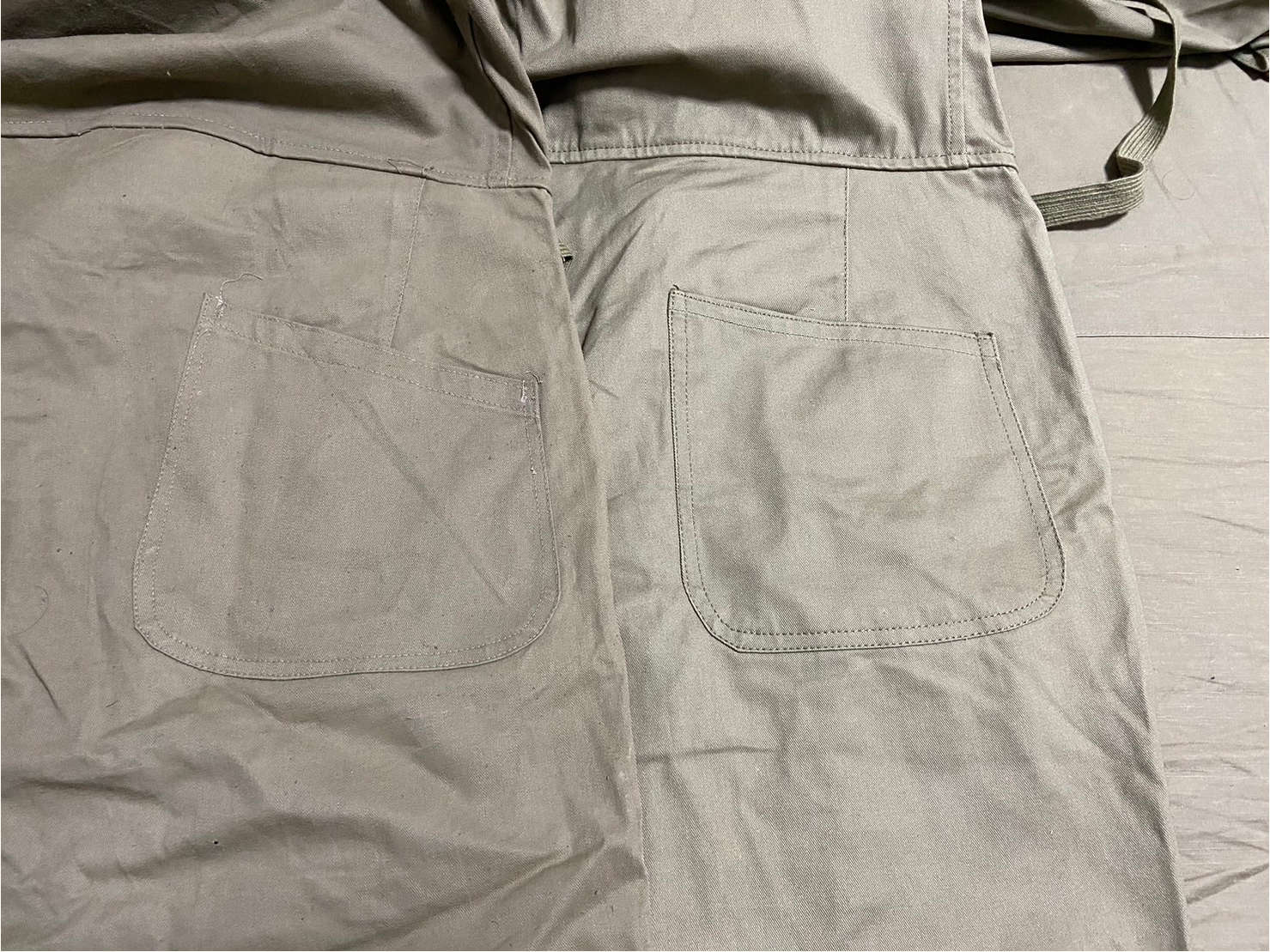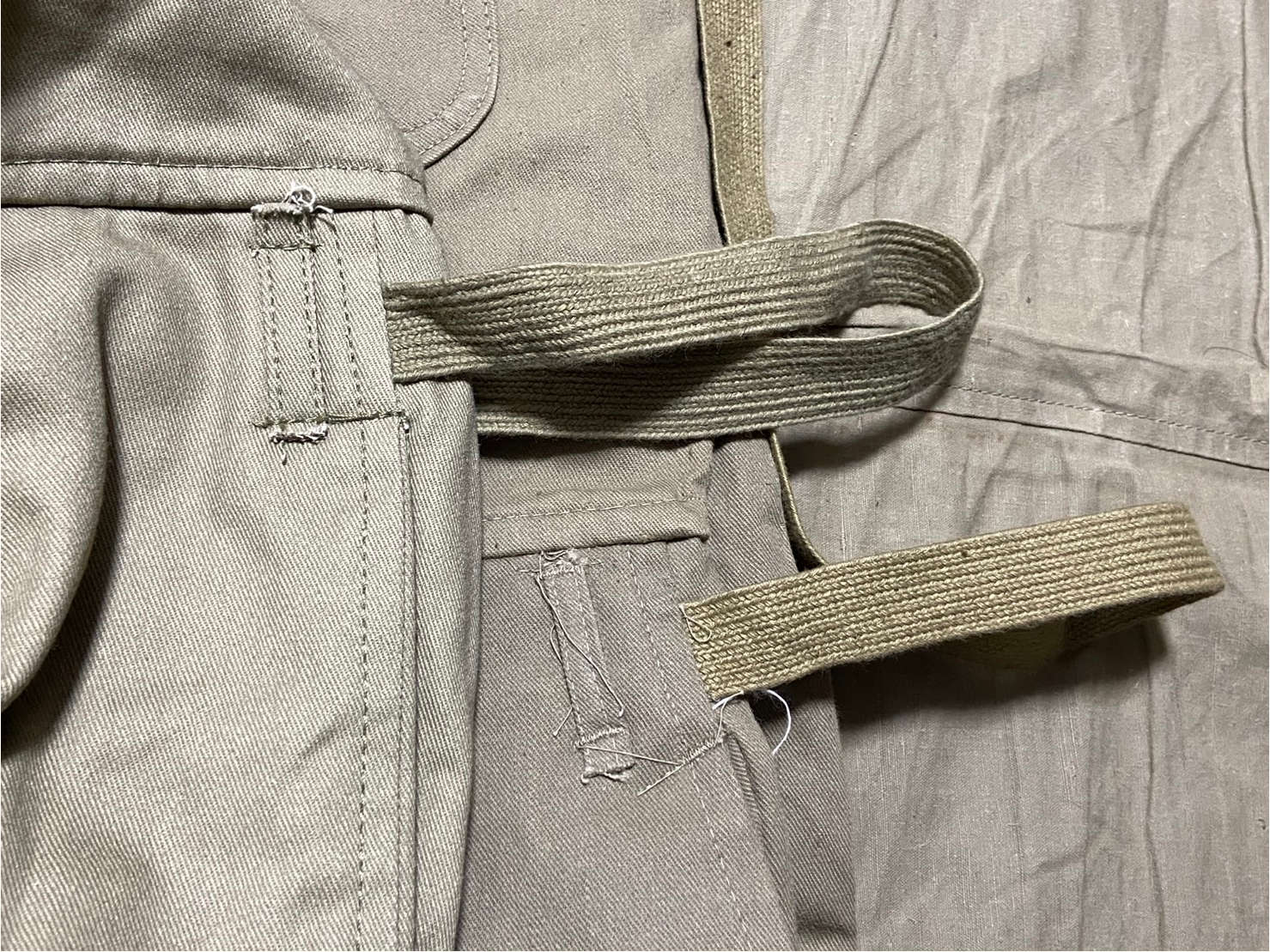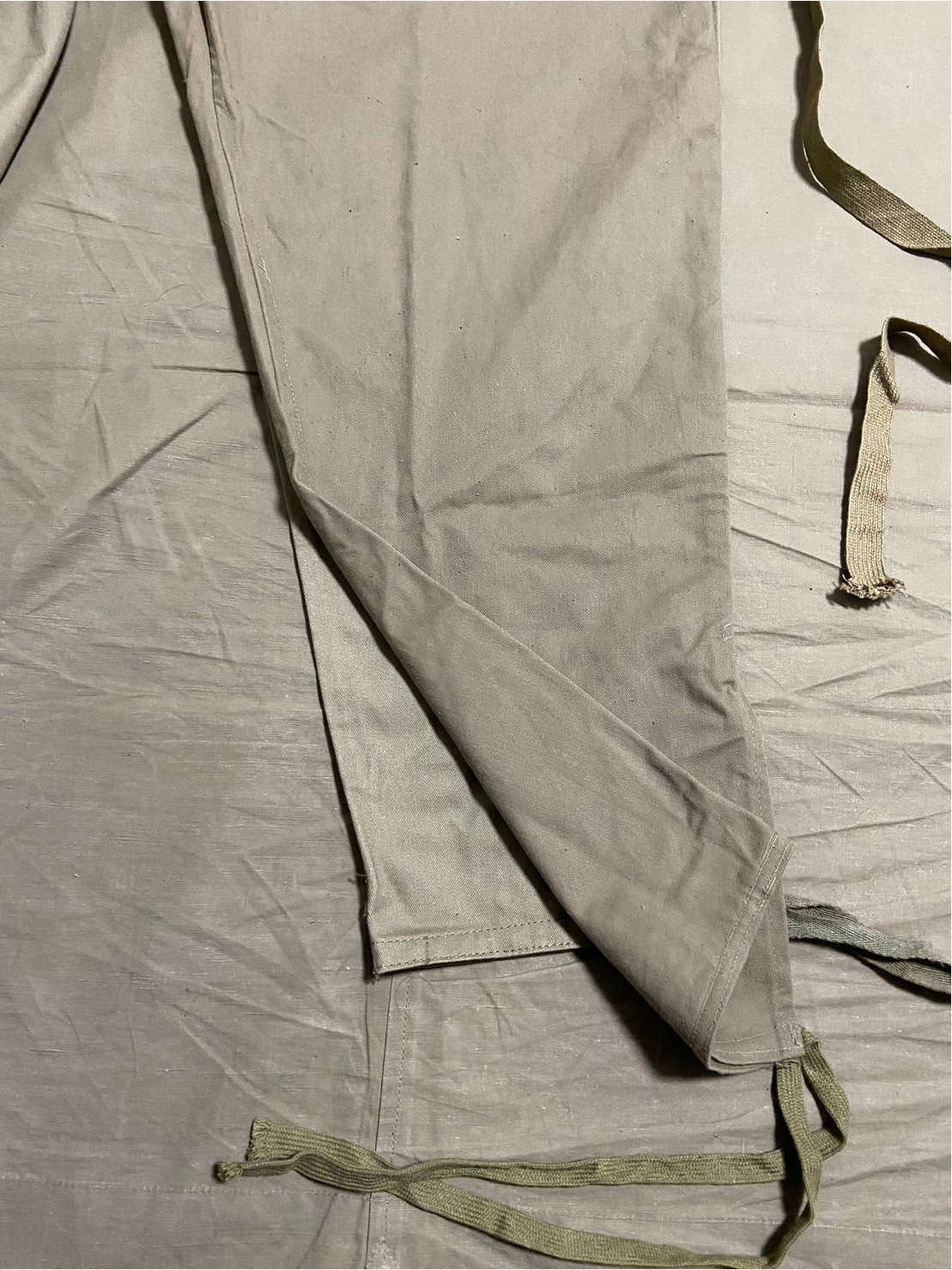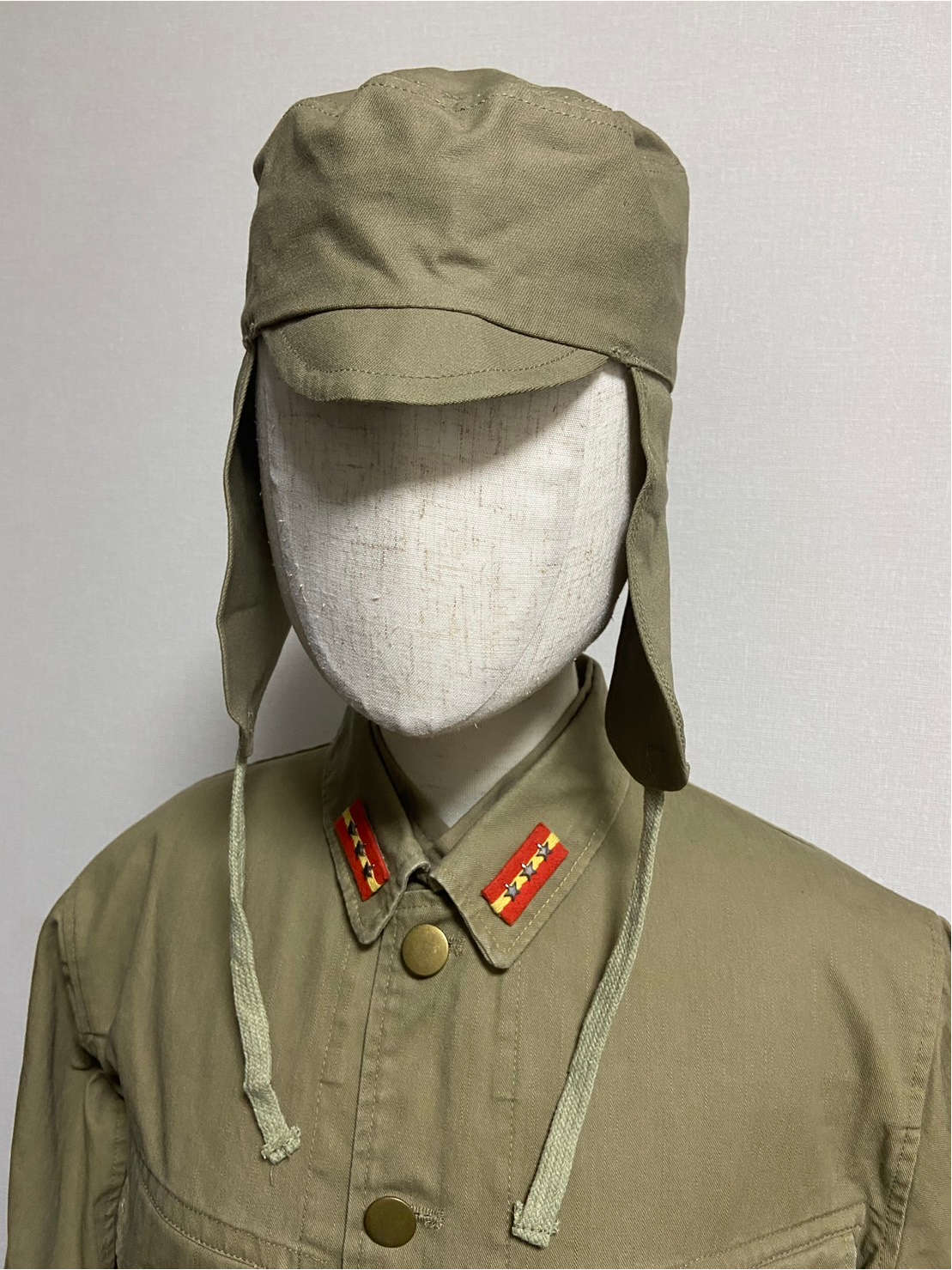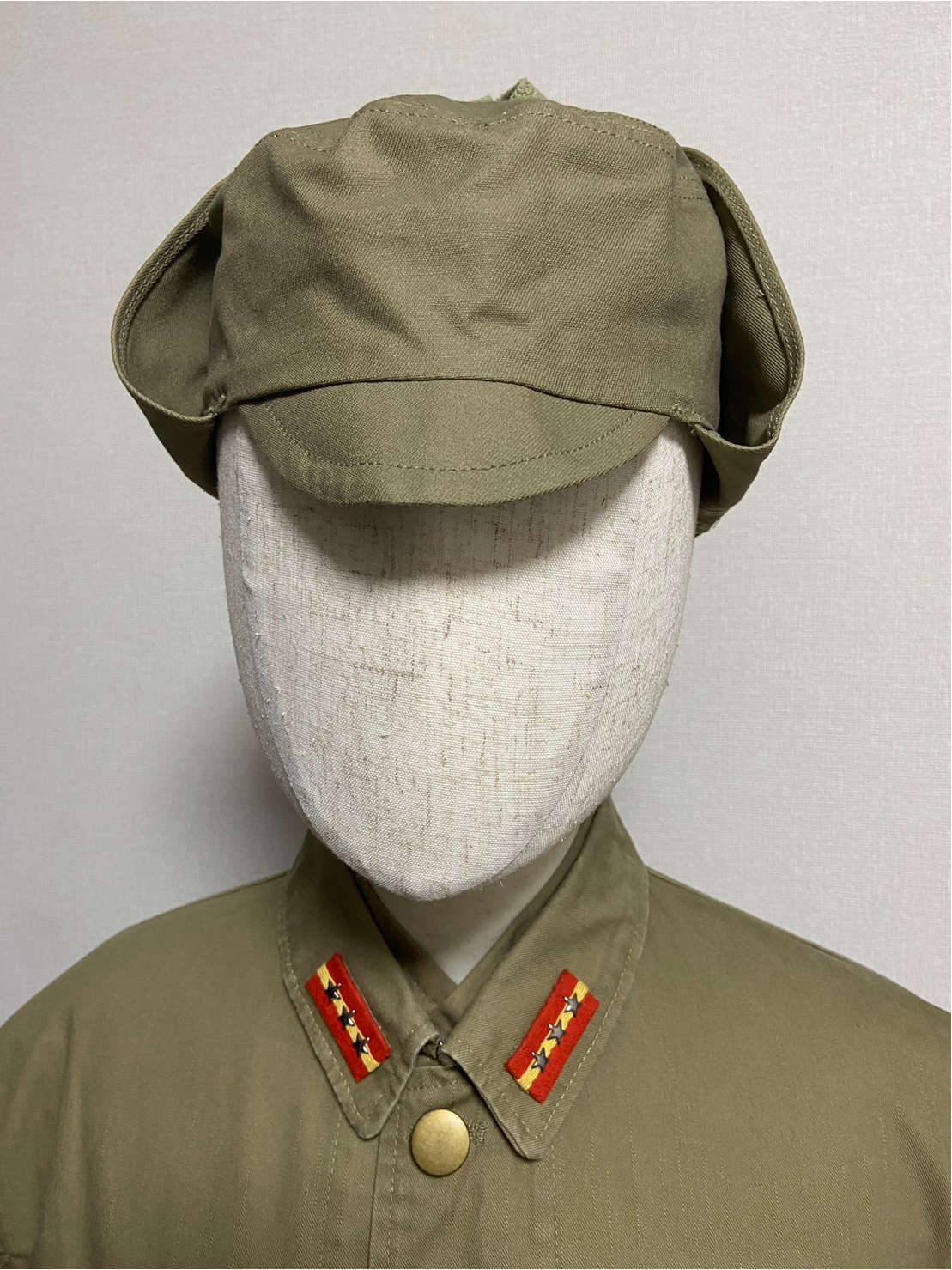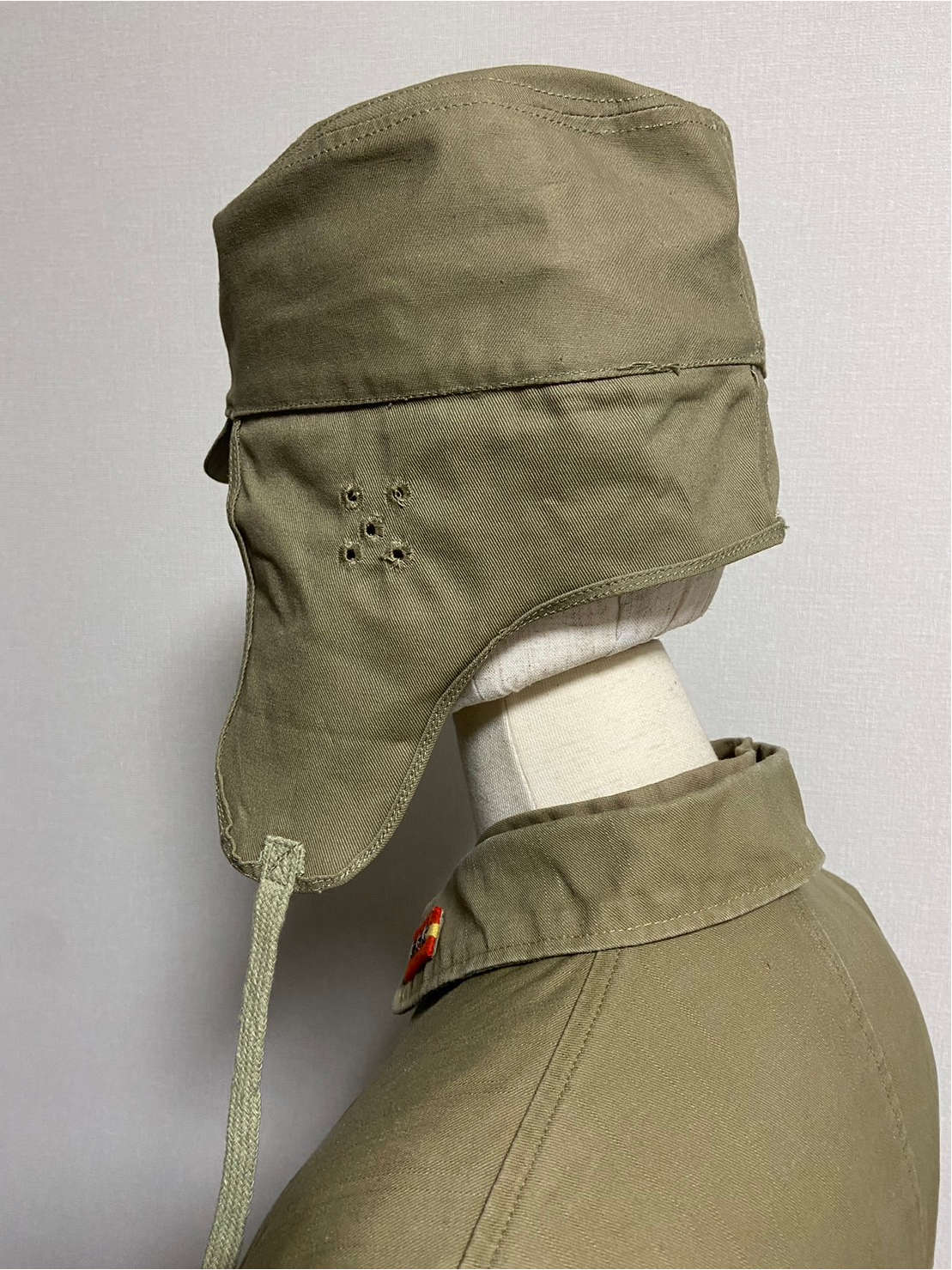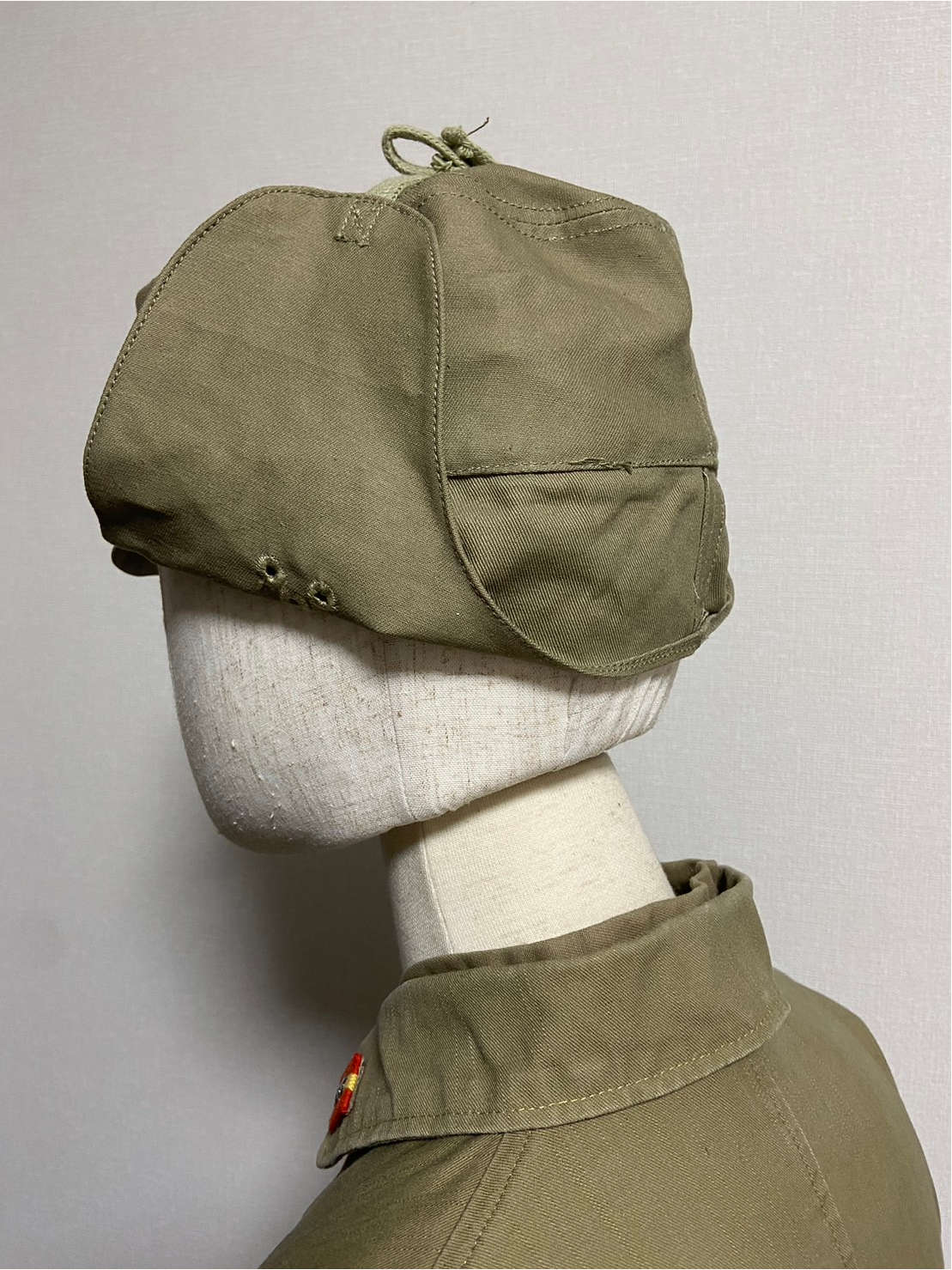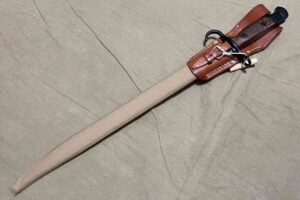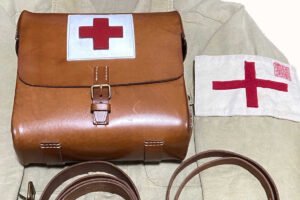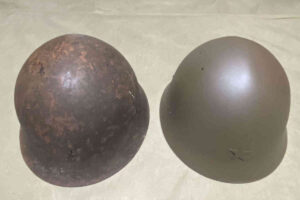I would like to compare the authentic and replica Tanker Overalls worn by tank crew and mechanics of the Imperial Japanese Army. Incidentally, the correct Japanese term for Tanker Overalls is “Daini-shu Sagyou-iko” (第二種作業衣袴), Type 2 Workwear.
Since childhood, I have been interested in tank models and developed an interest in the Imperial Japanese Army. During my university years, I wrote my graduation thesis on the production of Japanese Army tanks. As a result, I have a particular affinity for the gear of tank crew members. As part of this interest, I have also collected Tanker Overalls.
My authentic Tanker Overalls are large size manufactured in 1944 (Showa 19) at the Army Clothing Depot (Rikugun Hihuku Honshō/陸軍被服本廠). It is in excellent condition without any oil stains, suggesting it is an unused deadstock item. However, there are a few holes, so I plan to take it to a clothing repair specialist to have it restored using reweaving techniques. Due to its slightly damaged condition, I won it on Yahoo Auctions for about 20,000 yen. Although it wasn’t very expensive, it is rarely listed on Yahoo Auctions, so acquiring it was somewhat challenging.
The replica being compared is an L size from HIKISHOP, although I also have a S size. Initially, I mistakenly purchased the S size and later bought the L size. The S size seems suitable for heights up to about 165 cm, but for taller individuals, the sleeves and hems become too short and restrictive. Wearing it over the Type 98 Tunic, as in the original use, would likely make it feel quite tight.
The Tanker Overalls are full-body coveralls, making them difficult to photograph due to their large size. For full-body shots or images of them being worn, please refer to online searches. In this comparison, I will focus on the details.
Fabric
First, let’s focus on the area around the left chest, which is the most prominent. In the following photos, the left side shows the authentic item, while the right side shows the HIKISHOP-made.
The fabric of the HIKISHOP-made Tanker Overalls are likely the same as that of the Type 98 Summer Tunic, and when photographed or viewed under sunlight, the fabric appears to have a bluish tint. In the comparison photos in this article, it also appears somewhat bluish, so please pay close attention to that.
Additionally, HIKISHOP-made Type 98 Summer Tunic tend to shrink with repeated washing, so there is a possibility that the Tanker Overalls may shrink similarly. The replicas introduced this time have not been used or washed. It is also presumed that the authentic items have not been washed.
Upper Body Silhouette
The following photos were taken with the authentic item placed on top of the replica. The upper body silhouettes almost perfectly overlap. The size and silhouette were perfect.
The stitching at the ends of the sleeves was slightly different. The folded sections were distinct, and the most significant difference was at the cuffs. As mentioned later, the button positions were also different. However, once worn with gloves or driving gloves, it would likely be unnoticeable.
Chest Pocket
The next is a close-up of the left chest pocket. In the following photos, the left side shows the HIKISHOP-made, while the right side shows the authentic.
Upon closer inspection, you may notice a slight difference in the size of the flap, but this is at a level that would only be discernible when the two are carefully compared side by side.
The authentic item is adorned with wooden buttons. Since it was manufactured in 1944 (Showa 19), it is believed that wooden buttons were used due to shortages of materials. Personally, I own the overalls of the cold weather type, and they have resin buttons. I suspect that the Tanker Overalls also initially featured resin buttons.
Sleeve Cuff Buttons
This is a comparison of the buttons on the cuffs. The photo shows the left sleeve cuff, with the folds adjusted to match the same condition. The left side displays the HIKISHOP-made, while the right side shows the authentic.
As you can see, the placement of the buttons differs significantly. The authentic item has buttons positioned to properly cinch the sleeve. Additionally, the two buttons are not centered on the cuff band but rather offset. This suggests that it was intentional rather than a result of sloppy workmanship, as both sleeves are attached in the same manner.
Regarding the button sizes, on the authentic, the buttons used on the sleeve cuffs are slightly smaller. The buttons used on the chest pocket and the body seams have a diameter of 20mm, while the buttons on the sleeve cuffs have a diameter of 18mm.
On the HIKISHOP-made, all buttons are the same size.
By the way, the HIKISHOP-made size S only has one button on the sleeve cuff. I had a friend who owns the small size of the Tanker Overalls, so I asked him to show me a photo of the small size. It turns out that the authentic small size has two buttons.
Inspection Stamp
In the authentic, the inspection stamp is located near the back of the left chest pocket. However, the HIKISHOP-made does not have an inspection stamp.
Placket
This is a comparison of the buttons on the seams on the front side of the torso. The left side shows the HIKISHOP-made, while the right side shows the authentic.
The vertical spacing of the buttons is almost identical. The most significant difference lies in the horizontal placement of the buttons. The replica has the buttons positioned almost in the middle of the vertical band area, whereas the authentic item has them placed considerably to the left.
Around the Waist
There’s a pocket on the right buttock. The left side is authentic, and the right is HIKISHOP-made.
You may not notice it without comparing side by side, but the pocket on the HIKISHOP-made is slightly larger.
This is the drawstring to cinch the waist. The left side is the HIKISHOP-made, and the right side is the authentic. The width of the drawstring is the same, and while the colors are slightly different, it’s at a level where you wouldn’t notice without comparison.
The length of the drawstring on the HIKISHOP-made is about 45cm longer. If it’s not inconvenient when worn, I think it’s okay to cut it to match the length of the authentic.
Legs and Hems
The leg portions also overlapped almost perfectly when the authentic was placed on top of the replica. The silhouette is truly well-executed.
However, the hems on the replica are 6.5cm shorter. Nevertheless, considering that the garment is originally made quite generously, and since the lower part is covered with leggings or similar boots, it shouldn’t be noticeable visually.
Summary
Features of the HIKISHOP-made Tanker Overalls:
- Fabric is similar to the Type 98 Summer Tunic, with a bluish tint reminiscent of HIKISHOP.
- Overall silhouette is almost perfect.
- It’s recommended to replace the buttons on the cuffs and seams for better detailing (for a late-war setting, wooden buttons with diameters of 20mm and 18mm are recommended).
- The waist drawstring is too long, so consider cutting it by about 45cm if it doesn’t cause any inconvenience when worn.
- The hems are 6.5cm shorter.
I listed the details, but overall, I believe it’s a very well-made replica. The differences are such that you wouldn’t notice without comparing it side by side with the authentic item. I think it will shrink quite a bit with repeated washing, so be mindful of that.
Since I don’t have the authentic small size, I couldn’t make a detailed comparison with the HIKISHOP-made size S, but considering the quality of the size L, I believe it’s well-made.
Extra
Here’s the HIKISHOP-made Work Cap. The soldiers wearing the Tanker Overalls, as depicted on page 19 of Ritta Nakanishi’s “Japanese Military Uniforms,” also wear this.
Unfortunately, I don’t have the authentic item, so I can’t comment on the quality. Just for reference.
